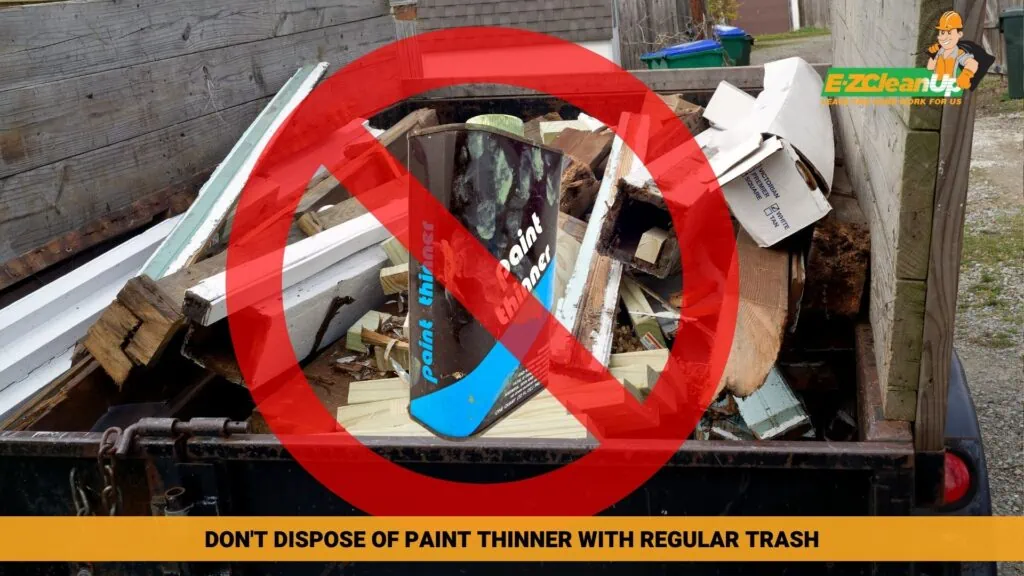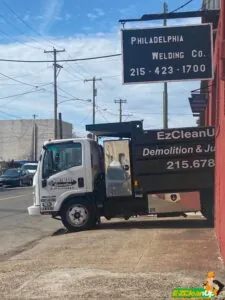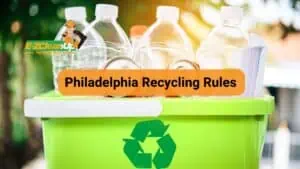Done with your project and now you want to know how to dispose of paint thinner? Follow these steps:
- Let it settle and separate.
- Pour off the clear liquid into a separate container.
- Solidify remaining residue.
- Store in a sealed container.
- Dispose of hazardous waste at collection sites.
Don’t pour it down the drain or into the ground.
Interested in knowing the details? Keep reading to learn how to do it safely and correctly.
How to Dispose of Paint Thinner, Step-by-Step
Handling chemicals such as paint thinner requires care and awareness to prevent harm to ourselves and the environment. Here’s a step-by-step guide on how to dispose of paint thinner.
Step 1: Let It Settle and Separate
Keep the used paint thinner in a clear, sealable container for several days. Over time, the paint particles will settle at the bottom.
Step 2: Pour Off Clear Liquid
Once the paint particles have settled, carefully pour the clear liquid on top into a separate container. This clear liquid can be reused.
Step 3: Solidify Remaining Residue
For the residue left at the bottom, you can solidify it. You can use an absorbent material such as cat litter, sawdust, or sand. Mix it with the residue and let it sit until it hardens.
Step 4: Store in a Sealed Container
Place the solidified residue in a sturdy, sealable container. Label it clearly to avoid confusion in the future. Make sure it’s stored away from children and pets.
Step 5: Dispose at Hazardous Waste Collection Sites
Finally, take the container to a hazardous waste collection site. Never pour paint thinner down the drain or in the trash. It’s harmful to the environment and could contaminate water sources.

DIY vs. Professional Disposal
The disposal of paint thinner is a task that requires meticulous attention due to the hazardous nature of the solvent. Both DIY (Do-It-Yourself) methods and hiring professional services come with their advantages and challenges. It’s important to weigh the pros and cons of each method to ensure safe and effective disposal. Let’s explore these two avenues in detail.
Pros and Cons of Handling Paint Thinner Disposal Yourself
Pros:
- Cost-Effective. Managing the disposal process yourself can save you money, as there’s no need to pay professional fees.
- Immediate Action. You can dispose of the paint thinner as soon as you’re ready without the need to schedule an appointment or wait for a collection day.
- Hands-on Control. You have complete control over the entire disposal process
Cons:
- Safety Concerns. Without the proper knowledge and equipment, there’s a higher risk of exposure to harmful fumes or potential spills, which can be detrimental to health and the environment.
- Time-Consuming. The DIY method requires your time and effort, from understanding the correct disposal procedure to executing it.
- Lack of Expertise. Professionals in hazardous waste disposal have training and experience that the average person might not possess. There’s a risk of improper disposal if you’re not fully informed about the process.
Benefits of Hiring Professionals for Hazardous Waste Disposal
- Expertise and Training: Professionals possess the necessary training and knowledge to handle hazardous materials.
- Safety: By outsourcing the disposal task, you eliminate personal exposure risks. Professionals come equipped with the right protective gear and equipment to handle the task without any incidents.
- Convenience: Hiring a professional service saves you time and effort. They will handle the collection, transportation, and disposal, freeing you from the responsibilities of the task.
- Eco-friendly Methods: Many professional disposal companies adopt environmentally friendly disposal methods.
- Compliance with Regulations” Disposal of hazardous waste like paint thinner is often governed by local or federal regulations. Professionals are up-to-date with these rules, ensuring compliance and avoiding potential legal issues.
Options for Recycling or Reusing Paint Thinner
Recycling or reusing paint thinner not only helps in reducing waste but also saves money.
Here are your options for recycling paint thinner:
1. Settling and Reuse
Allowing paint thinner to settle in a clear container for several days can separate paint particles from the liquid. This clear liquid can be reused as paint thinner for other projects.
2. Filtration Process
To make the reuse more effective, after settling, one can filter the clear liquid through a fine mesh or cloth. This ensures even the smallest of particles are removed.
3. Mixing with New Thinner
If the recycled paint thinner appears weak, you can mix it with new paint thinner to strengthen its potency. This method allows you to stretch the usage of new thinner while responsibly recycling the old.
4. Donate or Share
Sometimes, you might find that you have more paint thinner than you need. In such cases, instead of disposing of it, consider donating it. Local schools, community centers, or artists might benefit from it.
The Importance of Proper Labeling and Packaging
Handling and storing hazardous materials like paint thinner requires specific considerations. Proper labeling and packaging play a vital role in ensuring safety and preventing unwanted accidents.
Avoiding Accidental Consumption
One of the primary reasons to label containers holding hazardous materials is to prevent accidental ingestion.
Information at a Glance
A well-labeled container provides users with the information they need to handle the content safely. This might include storage instructions, expiration dates, or warnings about mixing with other substances.
Facilitates Proper Disposal
Without labels, one might forget what a container holds. When it comes to disposing of chemicals, it’s crucial to know what you’re dealing with to ensure it’s done correctly. Proper labeling ensures that the substance can be disposed of in the right way.
Packaging for Safety
Hazardous materials like paint thinner need containers that can prevent leaks and exposure to air. Using the right packaging ensures that the content remains intact and prevents potential spills that can harm both individuals and the environment.

Does Paint Thinner Evaporate?
Paint thinner is a solvent typically made up of mineral spirits, which are volatile organic compounds (VOCs). Due to its volatile nature, paint thinner does evaporate when exposed to air. The rate of evaporation can vary based on the specific type of paint thinner and the conditions it’s exposed to.
Several factors can influence how quickly paint thinner evaporates, such as:
- Temperature – Higher temperatures accelerate the evaporation process.
- Airflow – If paint thinner is left open in an area with a lot of air movement, such as near a fan or an open window, it will evaporate more quickly.
- Surface Area – Spreading paint thinner over a larger surface area will also speed up its evaporation. For instance, a soaked rag will dry faster than a puddle.
- Type of Paint Thinner – Different brands or types of paint thinner might have different evaporation rates. This is due to the variations in their chemical compositions.
Implications of Evaporation
As paint thinner evaporates, it releases VOCs into the air. Prolonged exposure to these fumes can lead to health issues like dizziness, respiratory problems, and even more severe health risks with consistent long-term exposure.
If not properly sealed and stored, a significant amount of paint thinner can be lost to evaporation, which can lead to waste and increased costs over time. Moreover, the fumes released from evaporating paint thinner are flammable. If these fumes are in a confined space with an ignition source, it can lead to fires.
Proper Storage to Prevent Evaporation
To minimize the evaporation of paint thinner:
- Use Sealable Containers: Always store paint thinner in a container with a tight-sealing lid.
- Limit Exposure: Only pour out the amount of paint thinner you need for a task and immediately reseal the container.
- Cool, Dry Storage: Store paint thinner in a cool, dry place away from direct sunlight and heat sources to slow down evaporation.
How to Recognize Signs of Deterioration in Stored Paint Thinner
Over time, even properly stored paint thinner can show signs of deterioration. Recognizing these signs early on can help users take appropriate actions to ensure safety and prevent unnecessary wastage.
Here’s how to detect and understand the signs of aging or deteriorating paint thinner:
1. Changes in Smell
A consistent and clear sign of deterioration is an altered smell. Fresh paint thinner has a distinct, strong odor. If the smell becomes rancid or different from its original scent, it may be an indicator that the thinner is breaking down.
2. Discoloration
Although paint thinner is typically clear, any change in color or the appearance of a cloudy residue can indicate contamination or deterioration.
3. Separation of Components
If you notice that the paint thinner has begun to separate into different layers or displays a settled residue at the bottom, this suggests that it may no longer be in its optimal condition.
4. Viscosity Alterations
Any change in the fluidity or consistency of the paint thinner, such as it becoming too thick or too thin, can be a sign that it’s deteriorating.
5. Ineffectiveness
If, when using the paint thinner, it doesn’t work as effectively as it once did—like not thinning paint as it should or struggling to clean brushes—it might be a sign that it’s past its prime.
6. Container Wear
While this is not a direct sign of the paint thinner’s deterioration, any rust, corrosion, or leakage in the container can compromise the quality of the paint thinner inside.
7. Precipitation
The appearance of solid particles or crystals settling at the bottom can be a sign of deteriorating paint thinner or contamination.
8. Container Swelling or Warping
If the paint thinner container seems bloated or its shape appears altered, it might indicate a build-up of gas inside due to chemical reactions, suggesting that the paint thinner is deteriorating and releasing gases.
9. Unusual Reactions
If the paint thinner reacts unusually when mixed with paint—causing clumping, uneven thinning, or any other unexpected results—it might be compromised.
Clear the Clutter: Make a Responsible Choice Today!
Understanding the proper techniques for disposing of paint thinner is vital for both individual safety and environmental protection. Whether you’re considering a DIY approach or hiring professionals, the key lies in being informed and taking the necessary precautions.
For those who’d prefer a hassle-free, professional approach, especially in the Philadelphia area, EZ CleanUp is your trusted partner. With our comprehensive range of services, we provide efficient solutions for all your paint disposal needs. Our expertise extends to managing materials like painted wood, concrete, brick, and even the safe disposal of potentially hazardous substances like paint thinner. As a licensed and insured junk removal company, we guarantee quality and safety in all our projects.
For a cleaner, safer, and more organized space, trust the experts. Consider EZ CleanUp for all your junk removal and disposal needs. Make the responsible choice today! 🧹🌟













